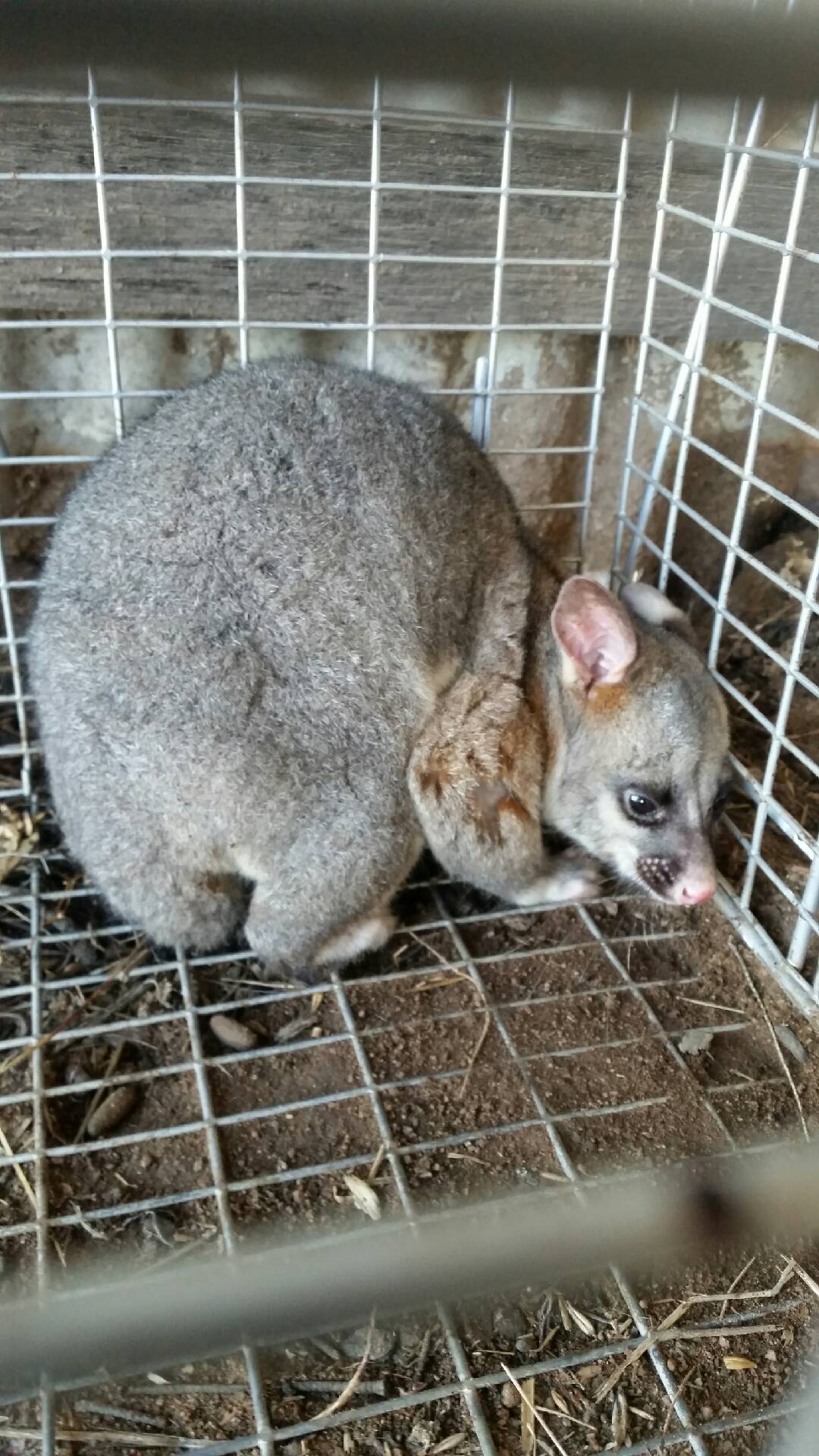Spring, autumn and winter are ideal seasons for cage trapping – particularly for feral cats. The days are shorter and cooler which reduces the chance of exposing trapped animals (target or non-target) to heat stress.
Fox cubs are also born in August to September. They will start to emerge from their dens at about 6 weeks of age. By November to December they will have abandoned the den entirely. At this time, young cubs tend to be easier to target with traps and baiting.
Why use cage traps?
While feral animal management regimens are tailored to target specific species through bait and trapping there is always the possibility of impacting native fauna. The non-lethal approach of deploying cage traps allows for the release of non-target, native species. In threat mitigation projects we have caught wallabies, wedge-tailed eagles (and other birds), possums and domestic pets, to name a few.

Providing trappers have access to an approved means of euthanasia (such as a rifle) also makes feral animal management accessible to a wider section of the community. In an animal welfare context, all animals are to be treated with care and respect regardless of whether they are native or feral.
How to get the most out of your on-ground trapping project
Here are some quick pointers in getting the most of cage trapping on your property:
Ensure cage traps are in good working order
- The trip mechanism is still functioning properly
- There are no exposed barbs or other sharp objects that may injure a caged animal (wild animals are not hugely enthusiastic about being caught in a cage!).
Finding the prime location
- Ensure you locate your cage traps along pathways used by the target species you’re after, as per our cage trapping guidelines. Foxes and cats tend to limit their exposure by venturing out into open spaces to access a cage trap
- Site your cage trap with a view to maximising exposure to the target species
- It can be helpful initially to situate the cage trap close to houses, sheds or along driveways for ease of checking (and testing and adjusting where necessary). Then start to move the cage trap further out as you gain experience with successful captures of feral animals
- Sheds are also often very attractive to cats in particular.
Lures, baits and attractants
- Tinsel, CD’s and anything that sparkles will often draw feral cats in closer to a cage trap when it reflects light sources.
Covering and wrapping cage traps
- Ensure you have an appropriate and breathable wrap to cover the cage in. We highly recommend hessian
- Wrap the cage along all the long edges and top but leaving both ends exposed to simulate a tunnel/hollow log effect. Trap audits show that deploying your cage traps in this manner makes them far more effective!
-
Wrapping the cage helps protect animals in a welfare context prior to release for non-targets and euthanasia for targets
- Trap audits clearly show that cage trap lines deployed in this manner perform much higher than unwrapped cages. It also excludes non-target species more often – which in turn ensures the unit itself is available for target species such as foxes and feral cats.
The last word in cage trapping
- Set the cage at the end of the day, then check and close again first thing in the morning. This minimises the chance of accidentally trapping non-target species
- For more information, including a handy video on setting cage traps, visit our Cage Traps page.
This Wheatbelt NRM project is supported through funding from the Australian Government’s National Landcare Program.

